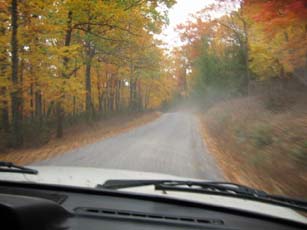Introduction
This exam consists of a project in which you will use the skills and apply the concepts that are covered in the lessons and projects of Geography 483. You have two weeks to complete this project.
There are two primary deliverables: a workflow and a site selection analysis. The workflow outlines the steps you plan to take to complete the analysis and is due by the end of Week 1. I will not grade the workflow on whether it is "correct" or not. I just want to see that you are thinking through the entire process and that you are trying to apply the GIS concepts you have learned in previous courses. While you can experiment with the software, you can write the workflow without ever opening ArcMap. Once your workflow is approved, you will work on the site selection analysis and then submit your work in a Word document by the end of Week 2.
Goals
Upon completion of this project you will be able to develop and implement an analytical workflow to solve a problem with GIS, demonstrating mastery in the course content of Geography 483.
Background
Examples of species extinctions resulting from human dominance are well-documented and can be found all over the world. In North America alone it is estimated that over 500 plant and animal species have become extinct since European settlement in the 1600s (Opler 1976). Even common species with wide distributions have proven to be no match for human competition. For example, during the American colonial period, passenger pigeon populations were estimated to include approximately two billion individuals. Historic accounts of this species indicate that it was once so common that huge flocks of passenger pigeons regularly obscured the sky (Scott, et al. 1987). By the mid-to-late nineteenth century, however, habitat loss and commercial hunting had taken its toll on this species, and in 1900 the last wild passenger pigeon was shot and killed in Ohio (Gill 1990).
The Endangered Species Act of 1973 has been the primary protection mechanism for plant and animal species that are in jeopardy of extinction. There are currently over 1,400 species listed as either threatened or endangered in the United States, and over 4,000 additional species are under evaluation for listing. One of the obvious challenges facing an endangered and threatened species is that by the time they become listed for protection they are already on the verge of extinction (Scott, J.M., et al. 1987). Conservation policies such as the Endangered Species Act are reactive, in the sense that attention is given to a species only after it becomes imperiled.
Wanting to take a more proactive role in species conservation, the Centre County planning office has decided to initiate a proposal for a biological reserve system within the region. If approved, the reserve system would protect lands that are unique in terms of species richness (number of different species) and habitat quality. To accomplish this, the planning committee has hired Acme Conservation Unlimited, a non-profit consulting group, to perform a site selection analysis using data collected by researchers at a local university.
As a GIS analyst working for Acme Conservation, your goal is to identify lands within the county that meet specific criteria defined by experts in the fields of land use planning and conservation biology. The results of your analysis will be used to create maps displaying the locations of the candidate reserve areas within the county. These maps will help local government officials make informed decisions with regard to the reserve system proposal.

